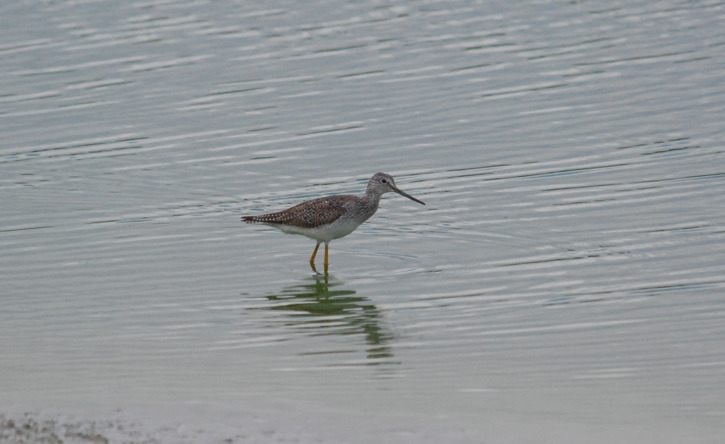I was a bit surprised last week to see two Greater Yellowlegs near the mouth of Kuskanax Creek. Yellowlegs belong to the sandpiper group, which together with the plovers and a couple of other small families comprise a much larger group known as the shorebirds.
As the name suggests, these birds spend most of their time at the water’s edge either feeding in the shallow water or on the adjacent shore. Some species will also feed in grassy fields, particularly in wet conditions.
Ideal conditions for most shorebirds are gently sloping shorelines providing extensive shallows and abundant wet shorelines or mudflats. The ever-changing water levels on Arrow Lakes make these conditions almost non-existent here. Our shorelines are almost all sand and gravel, neither of which contains food. As a result, very few shorebirds use Arrow Lake as a migration corridor.
It may seem a little early for migration, after all, summer only just arrived! But shorebirds, particularly the adult males, migrate southward very early. In most species, males play little or no role in the raising of young. So as soon as the mating period has ended, there is no reason for them to stay any longer. Female and immature birds move southward a little later.
Greater Yellowlegs do not migrate as far north as many species; this may also contribute to their early appearance in southern B.C. In this province, their breeding range is primarily found in the Caribou and the Central Interior, but there is some evidence to suggest that they may breed even further south than this. For example, three years ago I saw an adult, and two immature birds at a small lake on the Monashee. While they will sometimes migrate in family groups, the agitated behaviour of this adult suggested that the immature birds were quite young and still under the careful watch of the parent. I strongly suspect that these birds had nested at that lake.
Most shorebirds pass through southern B.C. in the latter part of August and in September. Provided the water levels have dropped a little by then, we may get a few more shorebirds stopping in for a visit at that time. The flats at Burton are the best place to look for them.
But by far the best place to see shorebirds in the Southern Interior is at Salmon Arm. There, the wide mud flats provide a haven for thousands of shorebirds every fall. It’s quite a spectacle to go there on a good day and see huge flocks of several different species, fattening up on the nutrient-rich mud flats before continuing southward to their winter homes far to the south of cold and snowy Canada.
